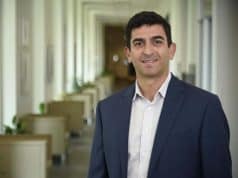A recent trend of escalating costs to host the Olympic Games may have reached a tipping point, as spending and return on investment are increasingly scrutinized. Two Goizueta Business School professors said the net economic benefit on a host city or country has varied widely, and the era of runaway price tags may be over.
“I don’t think that’s the mindset anymore,” said Tom Smith, (@thomasmoresmith) a Goizueta Assistant Professor in the Practice of Finance. “It’s not possible to keep up with the Joneses forever.”
As the 20-year anniversary of the Atlanta Summer Olympics arrives next year, city leaders, elected officials and economists around the world have taken another look at the costs, benefits and lasting impact of the worldwide spectacle. No other U.S. city has hosted the Summer Games since Atlanta, but in recent months, Boston organized a campaign for the 2024 Games that was met with considerable opposition.
A poll released in April by Boston National Public Radio station WBUR found more than 50 percent of registered voters opposed the bid. Many respondents cited costs above security for their opposition. This may suggest Bostonians believe the city can make capital improvements without using the Olympics as an excuse.
One problem is a proposal to build a temporary Olympic Stadium in South Boston. The site is currently occupied by large garages and rusty tracks used by the Massachussetts Bay Transportation Authority to repair an aging fleet of trains and buses, The Boston Globe reported.
Russia spent $50 billion for the Sochi Winter games. In return, the city received a transportation infrastructure at a “colossal” cost, said Jeff Rosensweig (@TheGlobalGuru), Associate Professor of Finance at Goizueta. Other cities to host, including Montreal and Athens, were saddled with debt not offset by community gains.
London and Barcelona put together successful campaigns that built infrastructure for a purpose, and it paid off. More importantly, Rosensweig said, in those cases, Olympic spending was used as a catalyst to refurbish rundown sections of town and turn them into community “hotspots.”
Global television reach also helped those cities reach a higher level of tourism status, something Brazil — the site of the next Summer Games — is hoping to achieve.
Smith has worked with the Rio Olympic Committee and immediately noticed a tremendous pride with bringing the Games to South America. But they still must balance that with affordability.
“If a city can pull it off without completely re-doing infrastructure, it might work,” Smith said. “These organizers should ask themselves, ‘How are we going to put this on in a fiscally responsible way.’”
In Los Angeles, the host city for the 1984 Summer Games, there was an immediate bump in employment. But Smith notes hiring trends caught up within 10 years.
From an economic development perspective, Smith said a project like the Krog Street Market in Atlanta could be done at a much cheaper cost with a higher likelihood of success longterm. A mixed-use development in a former Atlanta Stove Works warehouse, the Krog Street Market is home to several retail and dining options and plans to eventually feature a mid-rise apartment building.
And it’s not part of a massive, citywide effort like Olympic prep.
“Smaller projects do make sense,” Smith said.
While the Atlanta Summer Games made a small profit and didn’t take on public debt, they missed some opportunity, Rosensweig said.
“The fear of public debt made sense, after seeing Montreal’s losses,” Rosensweig said. “However, we missed a unique chance to build needed transportation infrastructure and our tourism brand. One symbol of the slight gain but opportunity cost: the Olympic stadium was wisely designed to be converted to a baseball stadium. The only problem is that a mere 20 years later Turner Field is being abandoned.”
Smith also noted that the 1990s did not see tens of billions of dollars in construction. That price tag seems relatively normal in the last decade.
“The overall balance varies by city and the ability to become a beacon for tourism and the need for useful infrastructure are two keys that can determine the return on investment,” Rosensweig said.










